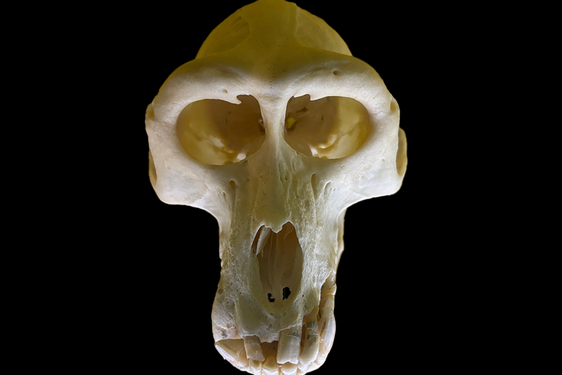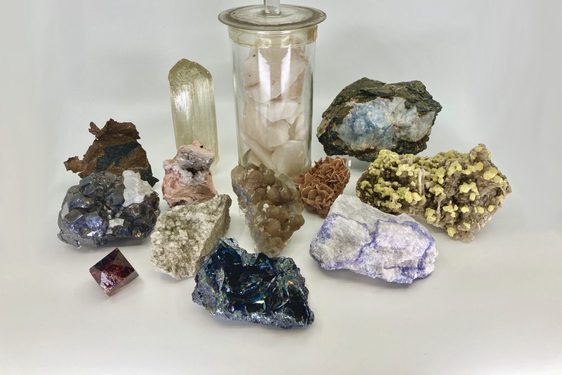
Scotland's native wildlife
News Story
Scotland is home to a wide variety of wildlife. Among the most recognisable species are red deer, which are monarchs of the glen, standing proud and majestic against the skyline.
Scotland is home to over 90,000 species. The land, seas, and skies support a wide range of native animals, plants, and fungi. Wild animals that are rare or extinct in the rest of Britain roam free here. With a focus on vertebrate life (animals with backbones), we take a look at some of the iconic, at-risk, and once extinct birds and mammals native to Scotland.
Red deer
The red deer is the largest deer in Britain and is an unmistakable icon of the Scottish Highlands. The autumn breeding season is known as the 'rut'. During this time males display, roar, and fight each other to defend groups of breeding females. Fighting can lead to them injuring each other with their sharp antlers. A single calf is usually born the following late spring or early summer. The red deer is a woodland species that has adapted to living on moorland, grasslands, and mountainsides.
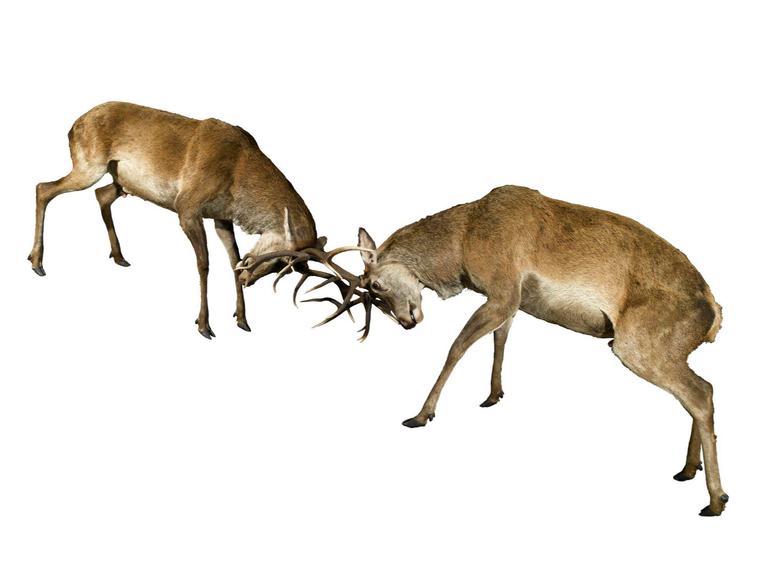
Two mounted red deer stags fighting, on display at the National Museum of Scotland.
Mountain hare
Mountain hares live in upland areas and are most common on heather moorland. They are at their most visible in spring when the snow has melted but the hares are still white. They feed on heather, sedges, and grasses and nibble bark from young trees and bushes. Hares shelter in a ‘form’, which is a shallow depression in the ground or heather. When disturbed, they can be seen bounding across the moors using their powerful hind legs to propel them forwards, often in a zigzag pattern.
They moult twice a year. In spring they moult into thinner brown fur, which camouflages them against hillside vegetation. In the autumn they moult into thicker white fur for insulation and camouflage against the snow.

Mountain hares on display at the National Museum of Scotland.
Ptarmigan
Ptarmigan live in high mountains. They change their plumage three times throughout the year to match their changing surroundings. In summer, they are a mixture of grey, brown, and black above with a white belly and wings. In winter, they become totally white except for their tail and eye-patch, which remain black. The only place they are found in Britain is the Scottish Highlands.

Ptarmigan in winter plumage on display at the National Museum of Scotland.
Capercaillie
The capercaillie is a huge woodland grouse. The large dark males are unmistakeable. It is found in Scottish native pinewoods and in commercial conifer plantations. The capercaillie became extinct in Scotland by 1785 owing to habitat loss and hunting, but it was successfully reintroduced from Sweden in the early 19th century. Sadly, the British capercaillie population has declined so rapidly that it is at very real risk of extinction for a second time.
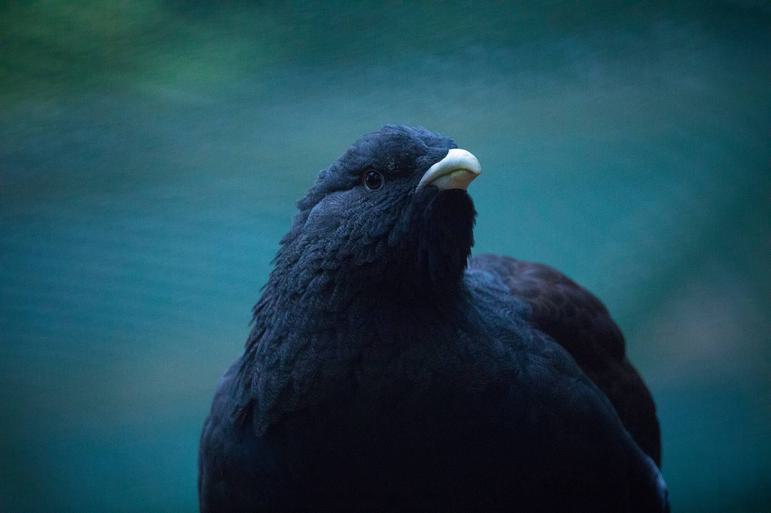
Male capercaillie.
Wildcat
Rarer than the tiger, the wildcat is Britain's last native cat species. Habitat loss, hunting, and persecution led to its decline. It almost became extinct at the beginning of the 20th century. Wildcats were once found throughout Britain, but by the 20th century occurred only north of the Central Belt in Scotland. Hybridisation with feral domestic cats led to its extinction in the early 21st century.
The Saving Wildcats project began to reintroduce wildcats from captivity to the Cainrgorms Connect area in 2023.
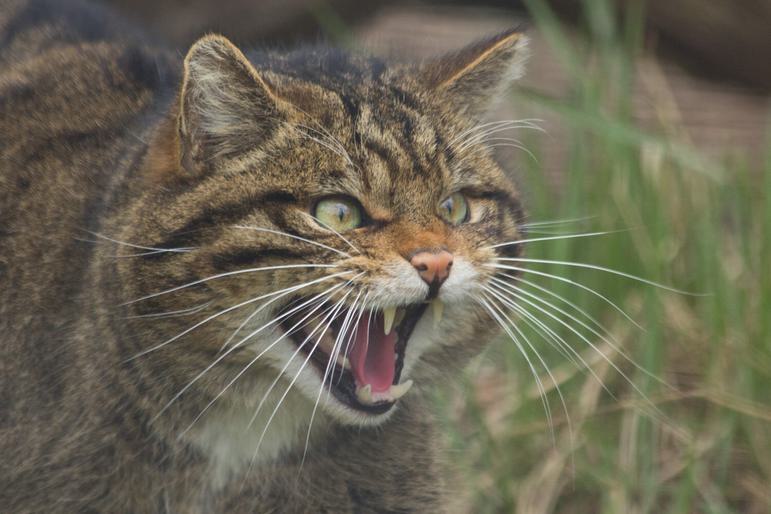
Hissing wildcat.
Red Squirrel
Red squirrels were once widespread throughout Britain. There are still many places you can encounter them today from the conifer forests of Galloway, to the Atlantic hazel woodlands of Argyll, to the country estates of Tayside or the Caledonian pine forests of the Highlands. They may have almost become extinct in Scotland in the late 18th century owing to habitat loss. Several reintroductions, mainly from England in the 18th and 19th centuries restored populations here.
Red squirrels are threatened by the spread of diseases from the non-native North American grey squirrel. They have been wiped out in many other parts of Britain.
Red squirrels feast mainly on seeds from pine cones in Scotland. They leave what looks like an apple core behind. Breeding begins in winter and carries on through spring. Females may have two litters of two to three young a year.
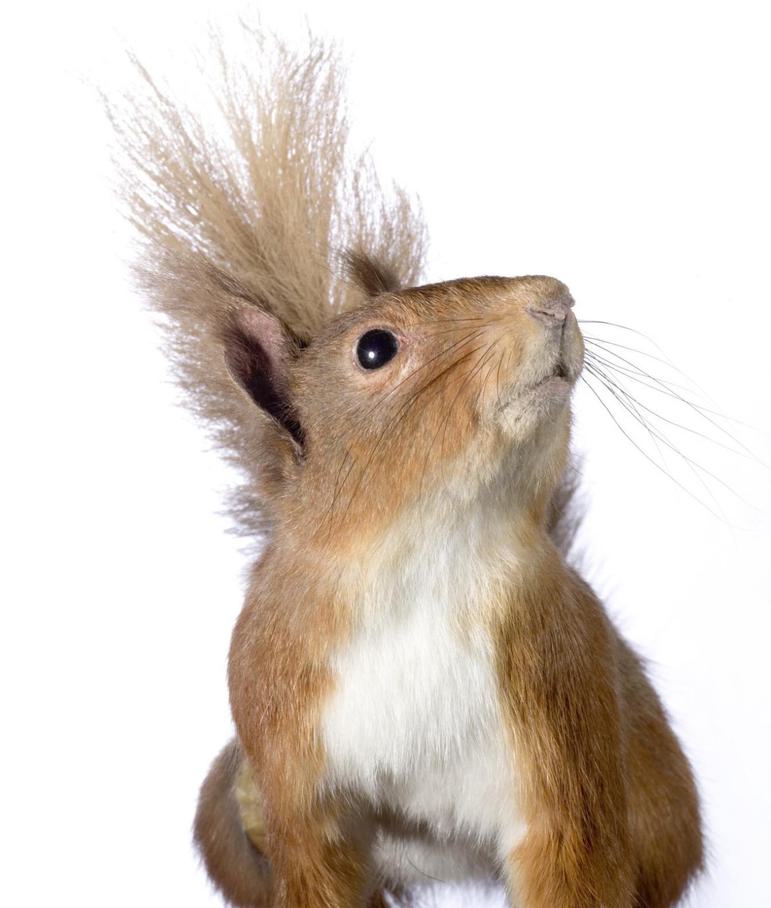
A red squirrel from the collection at National Museums Scotland.
Beaver
The Eurasian beaver is the world’s second largest rodent. It was formerly native to Britain and once played an important part in our landscape. However, it was hunted to extinction by the 16th century. In 2009, the Scottish Beaver Trial released the first beavers to live wild in Scotland in over 400 years. This marked the first formal reintroduction of a native mammal species in Britain. It also launched a groundbreaking five-year study to explore how beavers can enhance and restore natural environments. From 1 May 2019, the Eurasian beaver was granted European Protected Species status in Scotland.
Beavers are herbivorous and do not eat fish. Their diet is made up of aquatic plants and grasses, as well as the bark, twigs, and leaves of trees. Beavers live in small family groups and the adult pair generally remain together. Typically, two to four young, known as kits, are born each year. Youngsters stay with their family for around two years and help rear their younger siblings, before leaving to find territories of their own.
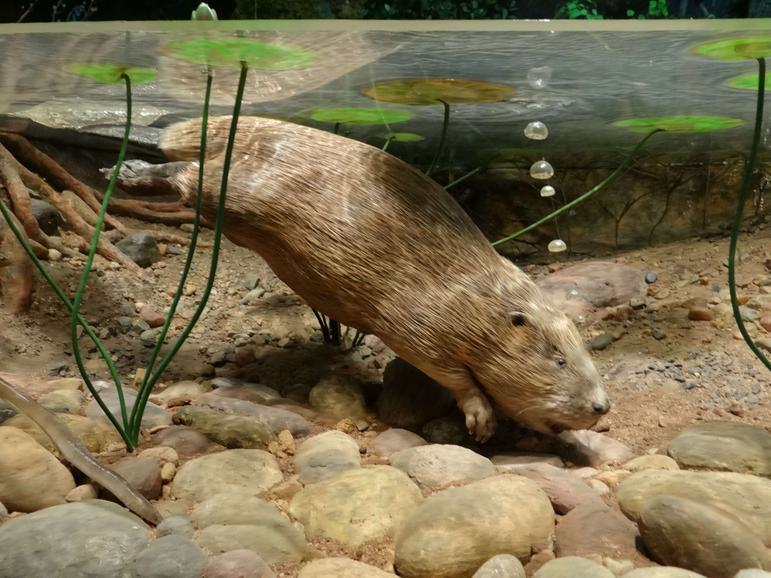
A beaver in the Beginnings wildlife diorama at the National Museum of Scotland.
Wild pig
The history of wild pig in Britain is complicated. A native species, it was hunted to extinction at some point in the Middle Ages. In the 1980s, wild pig farming became prevalent. Some animals are believed to have escaped - or were illegally released – into the wild. A small population occurs at Loch Arkaig in the Scottish Highlands.
Wild pigs have stocky, powerful bodies with grey-brown fur. Mature males have tusks that protrude from the mouth. Piglets are a lighter ginger-brown colour, with stripes on their coat for camouflage.
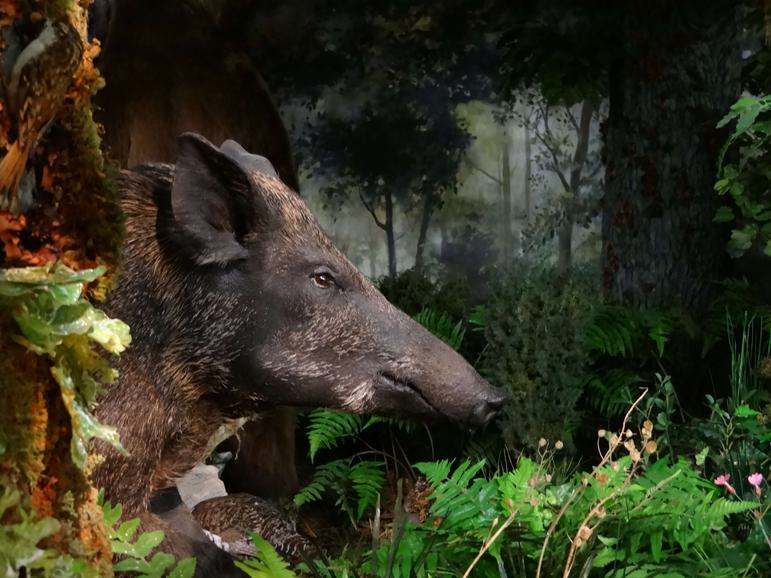
Wild pig in the Beginnings wildlife diorama in the National Museum of Scotland.
Reindeer
Scotland is home to Britain's only free-ranging herd of reindeer, which were once native to Scotland. They became extinct more than eight thousand years ago, probably due to a warming climate after the last Ice Age.
The Cairngorm Reindeer Herd was established in 1952 and decades later the herd now stands at over 150 animals.
Reindeer are adapted for the cold and the conditions in the Cairngorm Mountains suit them very well. They have thick fur coats with hollow hair to insulate them from the cold.
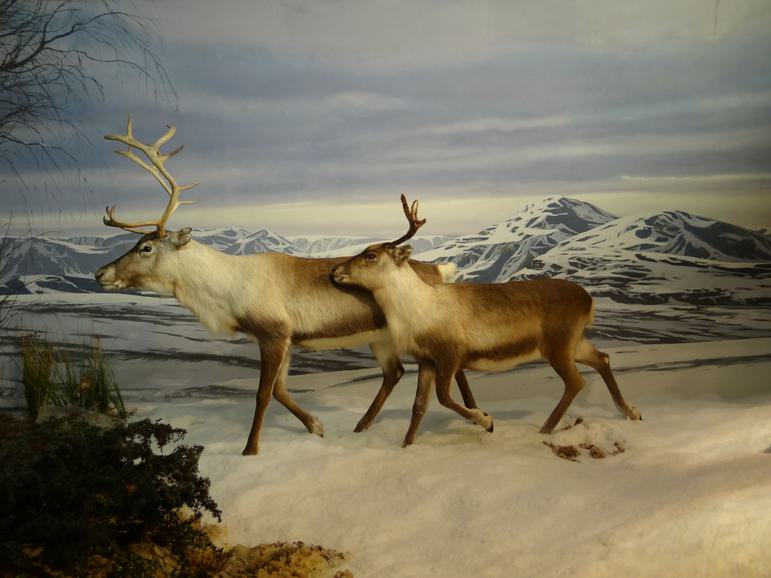
Reindeer in the Beginnings wildlife diorama in the National Museum of Scotland.
At risk
Certain species that were once common in Scotland are endangered and are now protected by law. Human intervention has played a role in harming habitats and has taken its toll on Scotland's native species.
Scotland's natural environment is constantly changing and wildlife that used to live in Scotland is now extinct. Although extinctions may be natural, the impact of human activities on habitats and species has increased rates of extinction. These activities include increased and intensified agriculture and forestry as well as an increase in infrastructure associated with urban development.
Conservation organisations are working hard to restore and ensure the continued survival of Scotland’s native wildlife and habitats long into the future. Part of this conservation action involves the reintroduction of some species that were once native to Scotland, including white-tailed eagles, red kites and beavers. Other species that are currently being restored to Scotland are the wildcat and pine hoverfly.
